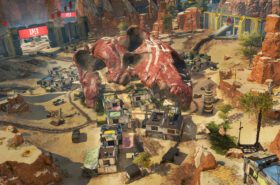What is GameFi
GameFi is a combination of online Gaming and Finance. GameFi allows players to earn, own and trade in-game assets, that have real value (can be exchanged for money). GameFi therefore allows players to earn money. Adding Finance is made possible by blockchain tech, such as NFTs and cryptocurrency tokens.
How Does GameFi Work
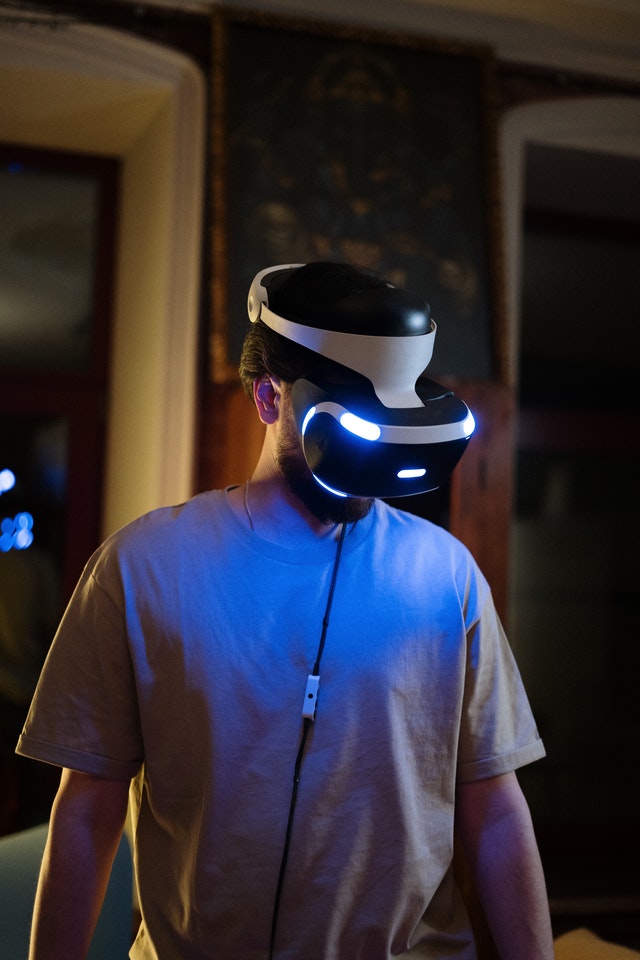
By incorporating blockchain technology, GameFi enables gamers to own their in-game assets and to trade them on a secure, decentralized platform. This opens up a whole new world of possibilities for both game developers and gamers. For example, game developers can now create games that have persistent economies, where players can earn real-world value for their in-game accomplishments. And gamers can now play games not just for fun, but also for profit.
The GameFi Flywheel: How Does GameFi Create Value?
- Developers improve the game by building GameFi incentives (rewards for users to build parts of the game).
- Players help build parts of the game (because they are rewarded with game assets). Players own parts of the game & these assets have real world value (they can be exchanged for money)
- Rewards (earnings & ownership): More Users to join (acquisition) & more loyalty per user (retention). More users means more revenues for development & incentives.
- Game progress is also sped up because dev work is supported by crowdsourced community work & community input helps devs build the right things.
The Benefits Of Using GameFi Include
Increased engagement and retention: Games that use GameFi are more engaging and fun, which leads to increased player retention.
New revenue stream: Tokens that players earn can be used to purchase in-game items, bonuses, and other features. This provides a new way to generate revenue from your games.
Improved player acquisition: GameFi provides a new way to attract and acquire players. By offering an engaging and fun game with the potential to earn fi tokens, you can attract a whole new audience of players.
Faster progress creating a more valuable game: Dev work is complimented by crowdsourced community work and community inputs guides devs to work on the right things (i.e. direct customer feedback insights).
The Benefits Of Using GameFi For Gamers & Users

GameFi allows players to:
- Actively take part in building the ongoing success of the game
- Earn and own large parts of the game
- Benefit from the financial rewards of the game
Players become more immersed in the game & contribute more to building the ongoing success of the game.
The Benefits Of Using GameFi For Developers & Game Companies
Developers enjoy faster progress as workload to shifts to users. Developers also enjoy more users, playing games more often.
GameFi gives developers:
- Repeat users & more usage per player (because games are more immersive & players have a vested financial interest)
- Loyalty/stickiness from players (because players are playing games that they have co-created)
- Development progress stickiness is quicker, with real-time feedback from Players & work can be crowd-sourced (because players have financial incentives: ownership & the ability to earn)
The Benefits Of Using GameFi For Investors
GameFi creates a flywheel of value for both users and developers. Thich allows the game development to be quicker and more valuable to users i.e. a more valuable game
GameFi gives investors:
- Network effects: Increased value for all participants (Gamers and Developers)
- Competitive moat: Loyalty/stickiness from users
- Faster growth: developers can build quicker with support from users contributing to the game
- relevant growth: the right things get built because gamers are actively involved
What Is The Difference Between GameFi And Other Platforms?

Players in GameFi can:
- Earn in-game assets that have real-world value (can be exchanged for money).
- Own game assets. This allows players to:
- Actively participate in how the game gets developed. This creates player loyalty and repeat-use.
- Use in-game assets to access financial services (like a savings account, where your asset earns interest).
- Trade across different games: This creates a more immersive experience for gamers and a network effect for the games involved.
How Can GameFi Be Better Than Traditional Online Games?

- GameFi provides new methods for monetization. By allowing players to earn, own & trade game-assets (in exchange for adding value to the game). These assets have real-world value (which can be exchanged for money).
- GameFi is more inclusive, and has a Larger TAM (Total Addressable Market): Blockchain tokens allow users to:
- more actively participate in the ongoing development of the game
- earn an income
- trade value within the game and with other games
- store value outside the game.
- Players contribute to the success of the game e.g. development, roadmaps, marketing, beta-testing etc. this is better than a traditional game because:
- The game roadmap is more relevant & valuable to players: because players have actively helped choose what new additions are built into the game.
- Game progress is faster: when users contribute, they remove workload from developers & speed up game development progress, because work is crowdsourced.
- GameFi provides a new way to attract and keep players. Users are more loyal/sticky because they have a vested financial interest in the future of the game (ownership & ability to earn). The Game also more community-driven and rewarding with an extra layer of incentives.
Is GameFi As Good As Traditional Games?
Not yet. Good games take years to make by teams of developers. Also, GameFi elements are new and still being tested, whereas traditional games know which elements to use. It’s still early, many GameFi games aren’t yet as good as traditional games. Over time, as more GameFi games are made, and the technology improves, we expect that GameFi games will become just as good, if not better than traditional games.
Why Are Traditional Games Currently Better Than GameFi?
It’s too early. GameFi is not competitive with traditional games yet because it is still in development. Bigger games take time and large teams to build. Many larger games are being built however they don’t yet compete with large mainstream games because it’s too early in their development roadmaps.
NFTs, Decentralized Finance, and other technologies have to be integrated into the games for them to be able to function at a level where they can compete with traditional games.
The industry is still waiting for that “killer app” that will make GameFi irresistible to the masses. When it comes, it will change everything. Importantly, large resources have been committed to building GameFi Games: Billions of dollars and a large number of game developers are building GameFi games.
What is needed for GameFi to be truly successful?
The answer may vary depending on who you ask but there are a few key things that need to happen:
- Better quality GameFi-games need to be built with high-end graphics and gameplay that can compete with mainstream games.
- Better game design that creates long-term incentives i.e. users contribute real value to the ongoing success of the game & be rewarded appropriately.
- The technology needs to be more user-friendly so that it is accessible to casual users and non-crypto enthusiasts.
- More games need to be built, to test different models that may innovate faster than traditional games.
- There needs to be more awareness and education about GameFi and what it offers.
- More partnerships need to be formed with traditional gaming companies and traditional platforms to help with mass adoption, as well as leveraging the wealth of experience that traditional platforms have.
- GameFi needs to continue to evolve and add more features and functionality to stay ahead of the competition. This is especially useful with web3 integrations because Game has the lead and native expertise in these new areas.
These are all things that are being worked on by developers and the communities across gameFi. It will take time, but there is a lot of potential for GameFi to become a major player in the gaming industry.
Does GameFi Have Fundamental Value?
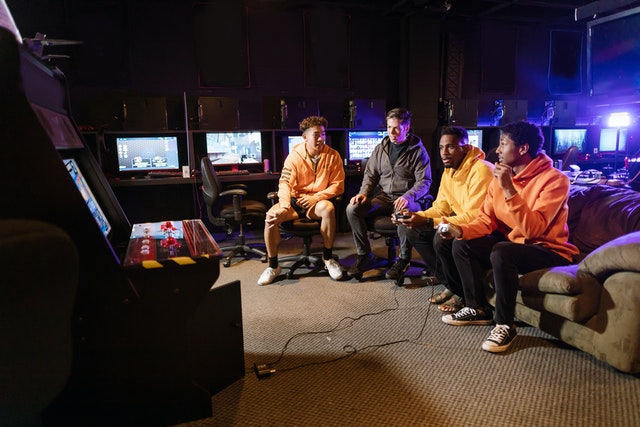
Yes, good GameFi Games do have fundamental value (earn revenues). These games:
- Earn revenues
- Pay rewards out of real earnings
- Have built a genuinely fun & captivating game that users enjoy playing
Are GameFi Games Unsustainable Speculation?
Unfortunately, a few GameFi games are only based on unsustainable speculation. These have been designed without fundamental value. Users should avoid these games, as they:
- Do not earn revenues
- Pay rewards out of a speculative asset with no earnings or a temporary cash pile
- Games are not enjoyable in isolation (players only paying to earn, not for fun)
How Do Players Make Money From GameFi?
Players can earn rewards for contributing to the ongoing success of a game. The game developers for each game will determine what has to be done to earn rewards. A good game design will include tasks that are interesting for the user and add real value to the game. Tasks can include anything from: contributing to the roadmap, marketing, development work, beta testing, creating content that helps new players, creating game assets, and playing the game for a certain time.
How Do Gaming Companies Make Money From GameFi?
Like traditional games, GameFi games can be monetized by:
- From Users (pay to play)
- Selling access: Players buy a game to play
- Selling utility: Players buy in-game assets to improve their game experience or progress faster
- From Companies (monetize user data)
- Selling attention: Companies buy Advertising / sponsorship
- From Investors (monetize growth)
- Selling potential: Users speculate on future game development, usage & earnings
- Selling financial services: GameFi typically have treasury assets which they can lend out in return for a yield.
What Types Of GameFi Games Exist?
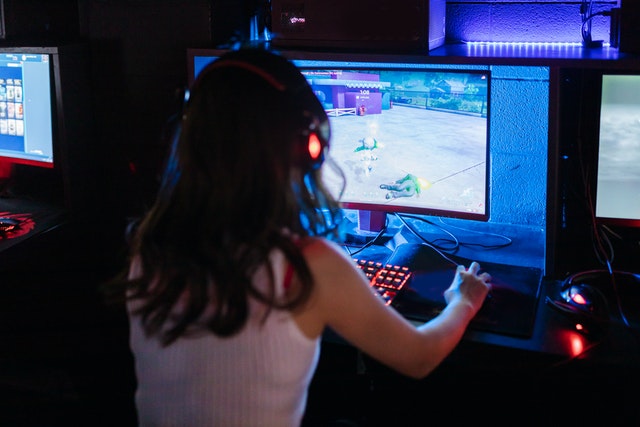
Almost every single traditional game can have GameFi integrated in (and Gamefi growth is expected to come from existing games upgrading). Current GameFi is a collection of games that range in complexity from basic lottery-style games to full-fledged MMORPGs which are much more in-depth. There are a few different types of games that use blockchain technology, such as:
Collectible card games: These are games where players can collect, trade, and battle with digital cards. The most popular example is God Unchained.
Decentralized casino games: These are games that integrated decentralized finance features into the game such as lotteries & decentralized gambling.
Multiplayer online games: These are games where players can interact with each other in a persistent, online world.
Prediction markets: These are games where players can make predictions about real-world events and earn rewards if they are correct. The most popular example is Augur.
Idle games: These are games where players can earn rewards while they are not actively playing the game.
Social media games: These are games where players can interact with each other and earn rewards for creating content.
Virtual world games: These are games where players can explore and interact with a virtual world. The most popular example is Second Life.
AR/VR/IoT games: These are games that use augmented reality or virtual reality technology. The most popular example is Pokémon GO. These are games allow players to interact concurrently with virtual objects & physical devices in the real world.
Are Mainstream Gaming Companies Involved in GameFi
Yes many traditional gaming companies have announced explicit intentions to build GameFi and metaverse tech. Gaming-dominated tech heavyweights like Microsoft, Samsung, even Sony have banded together to establish the XR Association, which aims to bring the notion of “experiential reality” to existence. Mainstream company interest and investment shows their conviction in this space – ultimately, they see opportunity enough to invest.
As per advocates of the metaverse, GameFi’s popularity, together with the expansion of NFTs, may offer the answer needed to make a much more compatible metaverse independent of Facebook’s dominance. It’s also worth mentioning that China has begun to take the metaverse seriously among its top gaming companies (Tencent, Netease), which has enormous potential given how large their traditional online gaming market is.
How Is The Metaverse Linked To GameFi?
The Metaverse is like your favorite social media app but in 3D. It’s a shared, virtual space where people can interact with each other and digital objects. The metaverse is made up of many different virtual worlds, the same way the internet is made up of many different websites.
Online games (including GameFi) each have their own digital worlds and each game will form part of the Metaverse. The same way each website forms part of the internet.
How Does The Metaverse Benefit GameFi?

New experiences. Games transcend reality e.g. you can have superhuman powers, experience new worlds, or explore our current planet earth in new ways (e.g. ‘travel’ instantly from country to country or, explore inside the human body). All of these ‘powers’ are available in the GameFi Metaverse where new experiences will be available using a collection of tech, such as 3D, sensory triggers & graphics engines. Importantly, we will experience these together with people from around the world.
Cross-game. Integrating games with each other create a synergy of value. Earning and owning assets in one game can be transferred to different games. This lifts restrictions on users, so they aren’t tied to one game. Cross-game allows users to experience variety. It also gives users exposure to new games, whereas previously closed games forced users to most of their tie in one game.
Users & Community. GameFi is centered around users. being a part of the Metaverse helps games access a broad array of users across the global population. This is a strong basis for building communities and helping users find communities that they want to be a part of. GameFi can also offer its benefits (e.g. financial rewards) to a larger group of potential players.
How Are NFTs Used In GameFi Games?
NFTs (Non-fungible tokens) are a type of cryptocurrency that represents a unique asset. NFTs are used in GameFi games to represent in-game assets such as characters, items, and land. NFTs can be bought, sold, or traded on decentralized exchanges. NFT features help in-game (and metaverse) marketplaces run more efficiently and exponentially increase the TAM (Total Addressable Market) because the possibility for cross-game assets is now a reality (buying an asset in one game can be transferred to another game).
How Do NFTs Make Games More Engaging And Fun?
NFTs give players many more possibilities for customization and ownership. They also make it possible for players to trade or sell their assets for real-world money. This adds an element of financial incentive to play the game, which can make the experience more engaging and fun. NFTs are also a far more efficient way to trade globally, instantly, cheaply 24/7 with the least amount of friction. This opens up cross-game trade and integration of game assets in other virtual worlds.
What Are The Benefits Of Using NFTs In GameFi?
1. NFTs can be used to represent ownership of in-game assets. This allows players to own their game characters, items, and land.
2. NFTs can be traded on decentralized exchanges. This allows players to trade their game assets for other assets or for cash.
3. NFTs can be used to represent fractional ownership of in-game assets. This allows players to own a portion of an asset, such as a virtual piece of land.
4. NFTs can be used to represent in-game items that are not physical objects. This allows players to own digital items, such as virtual art.
5. NFTs can be used to represent in-game assets that are not limited by the laws of physics. This allows players to own assets that would be impossible to own in the real world, such as a virtual planet.
What Are The Risks Of Using NFTs In GameFi?
There are a few risks associated with using NFTs in games:
1. NFTs are a new technology that is still developing. Their long-term viability i still evolving.
2. NFTs are stored on blockchains and are therefore subject to the chain’s users & risks (fees, speed & security).
4. NFTs may be subject to government regulation in the future.
5. NFTs may be hacked or stolen if users don’t adequately protect them.
History Of GameFi
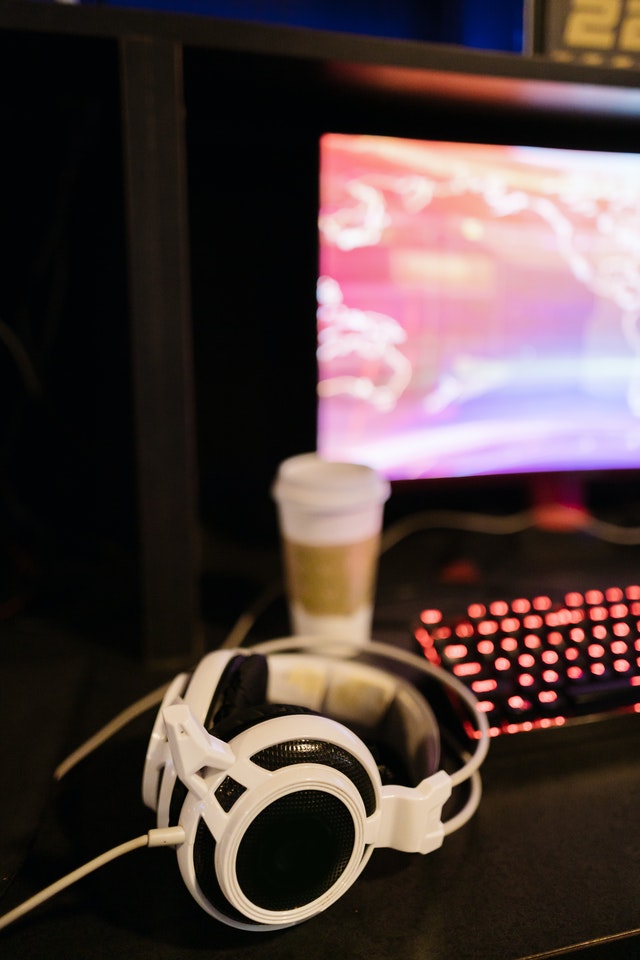
GameFi is only starting to produce semi-decent games, and deservedly only starting to gain public acceptance. The popularity of one of the niche’s flagship games, Axie Infinity, effectively demonstrates its rise. Axie Infinity, which boasts more than a million regular active gamers, became the fastest blockchain game to cross $1 billion in cumulative token purchases in August 2021 – one-fifth of which happened in 7 days.
While early blockchain games struggled to gain traction with the general public, the technology that underpins them has progressed to the point wherein new GameFi offerings are attracting enormous audiences. According to several industry observers, gaming is the most likely pathway to mainstream blockchain adoption.
The concept of limited digital commodities, tokenization, and in-game money is already recognizable to the world’s 2.7 billion video gamers. Moreover, blockchain technology enables these players in ways that benefit them both monetarily and in terms of the growth of a game. As a result, it’s not impossible to foresee GameFi devouring a growing portion of the $175 billion worldwide video game business.
Interestingly, the Blockchain Gaming Alliance, which aims to increase understanding of GameFi, already has some significant members, notably Ubisoft and AMD, a major game company. In addition, in May 2021, Ubisoft announced that GameFi will be the centerpiece of its 6th Entrepreneurs Lab program.
The Future Of GameFi
GameFi has a promising future in front of it, given the popularity of Axie Infinity as well as the number of blockchain games now in development on multiple blockchain protocols. However, it is difficult to anticipate how well this future will play out.
While many of the features covered in this article will undoubtedly appear in future GameFi releases, the rate at which blockchain technology is advancing today means that fresh breakthroughs are not uncommon. Many of these innovations will undoubtedly find their way into video games, bringing with them new and intriguing ways to commercialize new experiences.
GameFi has a fantastic path ahead of it. Although the exact end-game is uncertain (it’s literally being built as we speak).

How To Get Started With GameFi For Gamers & Users
If you’re a gamer, getting started with GameFi is easy. Just download any of the games that use the technology and you’re good to go. You’ll be able to use GameFi tokens to buy in-game items, just as you would with other digital currencies.
Use a reputable wallet service.
When it comes to storing your GameFi tokens and other digital assets, it’s important to use a reputable wallet service. There are a number of different options available, so do some research and choose one that you feel comfortable with.
Get involved in the community.
One of the best ways to stay up-to-date on all things GameFi is to get involved in the community. There are a number of active forums and social media groups where you can interact with other users and developers.
Be patient.
As we mentioned, GameFi is still in its early stages of development. This means that there will inevitably be some growing pains along the way. Be patient and remember that the overall selection of games and experiences will improve over time.
Follow the news.
Another great way to stay informed about all things GameFi is to follow the latest news and developments. There are a number of reputable sources covering the space, so find a few that you like and bookmark them for easy reference.
How To Get Started With GameFi For Developers & Game Companies
If you want to build a gameFi game, you’ll first need to understand
Underlying technology: that is stacked on top of traditional game development. It is logical to start development with current tech you feel most comfortable with i.e. if you build on unity Unreal Engine / GameMaker, then continue to build here & leverage their marketplaces for game assets. The second part is integrating GameFi into your game. This can be done through a simple API., here blockchain tech can be leveraged:
- Firstly choose the right chain for your game. Each chain has its own benefits and drawbacks, so make sure you understand the trade-offs before deciding on a platform.
- Secondly, blockchains enable NFTs which can be used to house any in-game asset
- Thirdly, the ecosystem gives you access to marketplaces and users.
Community & incentives: if you’ve already built a traditional game you will have great insight into what users want. With GameFi there is an extra layer of incentive around financial reward: earning, owning and trading in-game assets. If done right, these can create powerful incentives for users to help share workload and contribute to the game. This makes game development progress quicker and more accurately (because users are actively building what they want).
How To Get Started With GameFi For Investors
Get tokens on exchanges or seed-stage exposure games (pre-launch)
if you’re an investor, you can get GameFi tokens on exchanges such as Binance, Huobi, or OKEx. Alternatively, you can get them directly from the game developers themselves. This is a good way to support the development of blockchain games and applications.
Find ways you can contribute (beyond just financial)
GameFi is strongly focused on everyone contributing. This means GameFi is focused on users and developers i.e. passive investing is less important. By contributing you will become an active member of the game. There are many ways you contribute to a game such as writing documentation, developing SDKs, marketing or helping to test new features. The best place to start is simply reaching out to developers and players and asking how you can value to the ongoing success of the game.
Get involved in the community
Being involved helps you stay up to date and contribute to the ongoing success of the game. Community involvement is also a large part of GameFi, which means gamers and developers will be far more inclusive towards you if you make the effort to be involved. There are a number of different ways to do this, including joining forums, participating in discussions, and following development updates.



